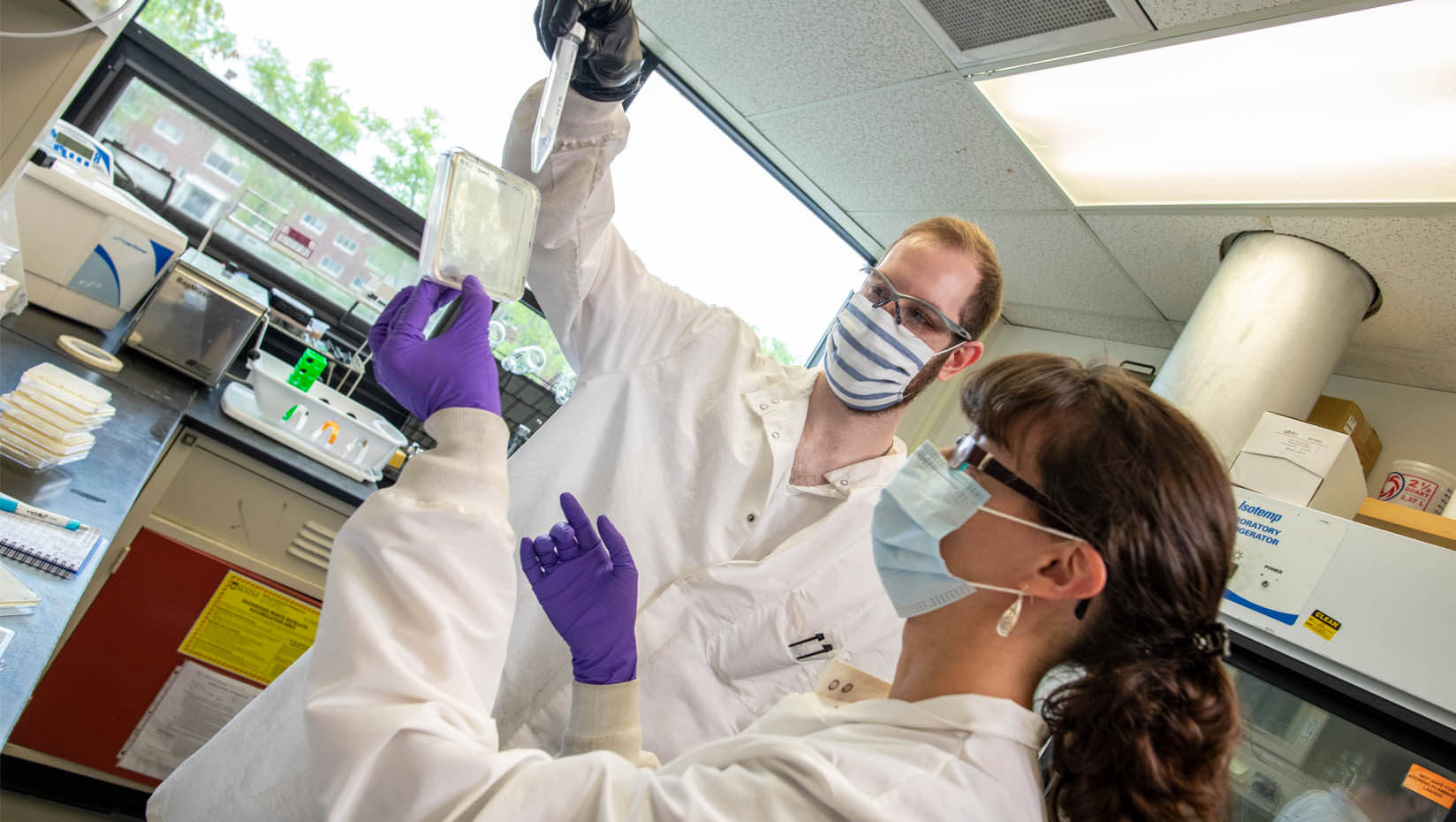
New liquid-coated air filters can improve early detection, analysis of airborne pathogens
Researchers from the University of Maine and University of Massachusetts Amherst have designed new liquid-coated air filters that allow for improved early detection and analysis of airborne bacteria and viruses, including the one that causes COVID-19.
While conventional air filters help control the spread of disease in public spaces like hospitals and travel hubs, they struggle to keep the pathogens they capture viable for testing. The inefficiency can inhibit scientists’ ability to identify biological threats early on, which could hinder any response and protection measures.
The research team, led by Caitlin Howell, a UMaine associate professor of biomedical engineering, developed a composite membrane with a liquid layer for filters that is better suited for capturing viable bacterial and viral samples for analysis. They modeled the membrane after the Nepenthes pitcher plant, which has a slippery rim and inner walls that cause insects to fall and become trapped within its digestive fluid. By keeping the bacteria and viruses they capture feasible for examination, researchers say their novel liquid-coated air filters can enhance air sampling efforts, early pathogen detection and biosurveillance for national security.
“I think for our patients and ourselves as caregivers, this technology will give us the confidence we are safer in performing care,” says Dr. Robert Bowie, medical director of the Down East Emergency Medical Institute. “Knowing we have improved safety makes it easier to leave our loved ones and go to work caring for others.”
The group of researchers developed multiple types of filters that contained their liquid-coated membrane technology, and tested their ability to preserve and release E. coli bacteria; SARS-COV-2, the virus that causes COVID-19; and JC polyomavirus, which attacks the central nervous system.
They specifically found that more airborne pathogens were captured by high efficiency particulate air (HEPA) filters with their liquid-coated membrane than those without. The team published their findings in the journal ACS Applied Materials & Interfaces.
“During the early stages of the pandemic we were watching in real time how many problems were being caused by no one knowing where the airborne virus was and where it wasn’t. We had a system that could start to address that need, so it was our responsibility to step up and help out,” Howell says.
The project was a significant interdisciplinary effort across the fields of biomedical engineering, chemical engineering and microbiology. The UMaine biomedical engineering team included first author and Susan J. Hunter Presidential Award winner Daniel Regan, Graduate School of Biomedical Science, Engineering (GSBSE) Ph.D. student Chun Ki Fong and former master’s student Justin Hardcastle. The microbiology team, led by associate professor Melissa Maginnis, included Avery Bond, a Ph.D. student in molecular and biomedical sciences, and Claudia Desjardins, then a university laboratory assistant in wastewater analysis. The chemical engineering team, based at UMass Amherst, consisted of professor Jessica Schiffman and Ph.D. student Shao-Hsiang Hung. The team was joined by Andrew Holmes, a biocontainment research scientist with University of Maine Cooperative Extension.
Regan first pitched the initial concept for liquid-coated air filters to capture bacteria-containing aerosols to his dissertation committee in March of 2019, based on conversations with military researchers and concerns for detecting potential contamination during medical evacuations. He also featured it in a presentation for the 2020 UMaine Student Symposium titled “Optimizing Liquid-Gated Membranes for Bioaerosol Capture and Release, which earned him the Dr. Susan J. Hunter Presidential Research Impact Award.
The concept was further developed and refined when Howell, Maginnis, Schiffman, and Holmes realized that this could also apply to virus-containing aerosols in the early days of the COVID-19 pandemic and applied for funding from the National Science Foundation. In 2020, the project was awarded a $225,000 NSF EAGER award — an early concept grant that supports “untested, but potentially transformative research ideas or approaches.”
“COVID-19 has been a constant reminder of the important role biosurveillance capabilities provide for decision makers to have detailed information for reducing biological risks” says Regan, now a fellow at the Janne E. Nolan Center on Strategic Weapons, an institute of the Council on Strategic Risks in Washington, D.C. “In the last year alone, the world has experienced high-consequence pathogens including an outbreak of monkeypox (or mpox), a resurgence of Ebola Sudan and high case numbers of Respiratory Syncytial Virus Infection (RSV). The need for pathogen early warning could not be greater, and it is our hope that further investment in liquid-coated air filters can help advance biosurveillance capabilities for aerosol detection.”
Contact: Marcus Wolf, 207.581.3721; marcus.wolf@maine.edu
